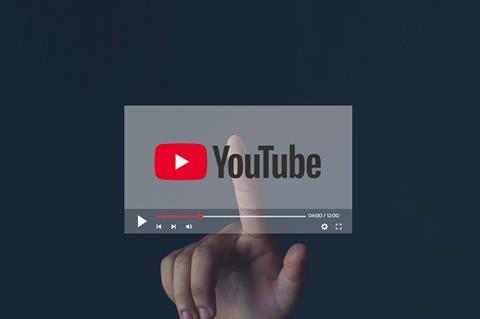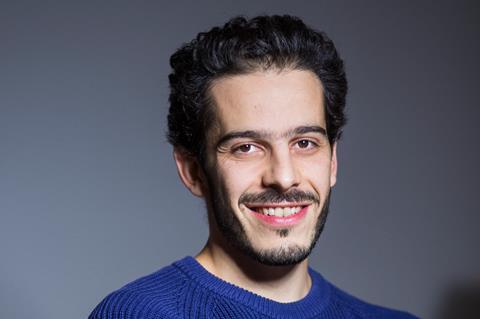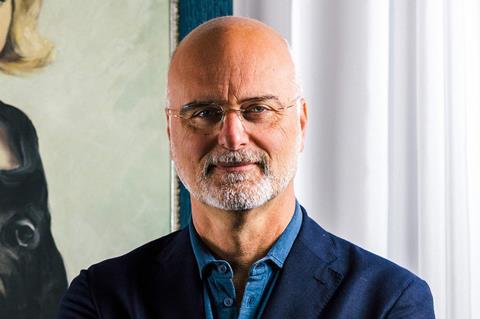For many in the film industry, YouTube is simply a place to upload trailers, movie clips and behind-the-scenes content. But is it time to overcome fears and adopt a new attitude to the platform?

It has been 20 years since the launch of YouTube, and it is now the most-watched media service on smart TVs in the US, ahead of both Disney+ and Netflix. In the UK, only the BBC iPlayer is more popular than YouTube on smart TVs.
YouTube is no longer just a platform for creator content and cat videos. It is now awash with long-form work such as game shows and factual programmes from major broadcasters, studios and production companies. Long-form content currently accounts for more than 70% of YouTube’s viewing.
Although the TV industry is increasingly embracing YouTube as both a promotional and a distribution platform for monetising content, for many in the film industry, YouTube remains a marketing platform – a place to upload trailers, movie clips and behind-the-scenes content.
Belatedly, some film companies are beginning to embrace the platform. Last month, Sweden’s SF Studios launched SF Studios Classics, a YouTube channel for its film archive. Others, like Italy’s Minerva Pictures and France’s mk2, are rapidly increasing their YouTube engagement.

Paris-based exhibition, production, distribution and sales outfit mk2 has been experimenting with YouTube content in its cinemas since 2015. It shook the French industry last year by releasing social-media star Inoxtag’s Everest documentary Kaizen a day before its YouTube launch. It was a huge success, selling 368,000 tickets in 24 hours in France.
“Cinema is not just for feature films”
Elisha Karmitz, co-CEO of mk2, believes if cinema is to stay relevant, it must have a relationship with the creators’ economy – and not feel threatened by it.
Cinema, he emphasises, should not be a “sacred place” for auteur movies of between 90 to 120 minutes.
“That’s what the gatekeepers want us to think,” says Karmitz.
He notes that when cinema was invented, people gathered in theatres to watch short movies. “It was a showcase for a new technology. They ended up watching the news and shows. The cinema hasn’t changed in the past 130 years. What has changed is the content.”
For the mk2 executive, the theatre should be a place to show the best content – whatever that is. In the past two years, mk2’s alternative distribution arm mk2.alt has released around 25 YouTube works of which Kaizen is by far the most successful. In September, mk2.alt released the first episode of French YouTuber Michou’s series Terminal – a battle royale event pitting 16 content creators against each other – which had 40,000 admissions over 48 hours.
There will be many more projects like Kaizen, says Karmitz. “This is here for the long run. It’s confirmation for us that event cinema is part of our industry, and it’s thriving. People want to attend events in cinemas.”

Producers and artists
The film industry is frightened of the power of YouTube, Karmitz believes.
“The creators on YouTube are not ‘YouTubers’,” he says. “They are producers and artists. The fact we call them ‘content creators’ or ‘YouTubers’ or ‘influencers’ is a way for the legacy media to try to downgrade them and to keep their power.”
A YouTube production is generally turned around at a much faster pace than the notoriously slow film industry is used to working.
“Terminal arrived on our desk on July 10 [before its September release],” says Karmitz. “You have to work quicker and be more agile. You release it, then you jump to the next project.”
YouTubers also require different support from distributors than traditional filmmakers, mainly around administration, contacts and logistics, suggests Karmitz. They will often handle a lot of the promotion themselves.
“A YouTuber doesn’t need anyone to create an artwork for them. They don’t need people who are older than them to tell them what type of artwork they need to talk to their community,” says Karmitz.
Library focus

Rome-based Minerva Pictures, a 72-year-old production, distribution and sales company, launched its first YouTube movie channel Film&Clips in 2014. Today it has 5.3 million subscribers
At the time, only about 200 films from its 2,000-strong catalogue were in circulation.
“We wondered how to leverage all the other films that would have otherwise remained locked in a drawer. We had the idea to try having some fun with YouTube,” recalls Minerva’s CEO Gianluca Curti.
Minerva became a pioneer in offering films on YouTube when the platform was mostly populated by short clips. Uli Edel’s 2002 historical epic Julius Caesar has racked up 21.6 million views since being uploaded in 2017, and 1967 spaghetti western Don’t Wait Django… Shoot! has amassed 8 million views since its 2016 upload.
It now manages more than 140 channels worldwide, distributing films in 15 languages through its digital distribution arm Digital United Studios, which launched last year. As well as the main Film&Clips channel, it has other YouTube channels that are categorised by genre (such as western, action or comedy) and language. In total, it manages more than 5,000 titles on YouTube, both from its own library and on behalf of other partners.
“It is no longer perceived as merely a place where content creators or kids have fun posting videos made with their phones, but as a place to find quality content,” says Curti.
The films are watched by YouTube viewers around the world, cutting across all ages, according to Curti. He declines to reveal the revenues that Minerva derives from YouTube but says it “allows us to experiment, invest, improve and raise the level of our content”. (Creators/distributors take 55% of advertising revenue on the platform while YouTube keeps 45%.)
Minerva is now pushing into the production of films specifically for YouTube. “Our intention, for the moment, would be to finance low-budget films and reach the break-even point directly through YouTube monetisation, cutting the traditional costs and timelines of distribution,” says Curti.
Younger viewers
For the past year, one of the biggest topics of conversation in the European TV industry has been how best to collaborate with YouTube. The platform was centre stage at the recent Mipcom TV market, where everyone from Banijay to the BBC was talking up their YouTube partnerships. For the TV industry, YouTube is a competitor for viewers’ time and ad revenue, but its massive reach helps to generate additional income and audience engagement, particularly with younger viewers.

“Concerns about cannibalising traditional viewership are starting to ease with the industry increasingly leaning in and recognising the opportunity to reach audiences via owned channels or within the creator network,” says Shaun Keeble, VP digital at global distributor Banijay Rights. It represents more than 220,000 hours of TV programming, including Survivor, Big Brother, Peaky Blinders and Mr Bean.
Many genres work well on YouTube according to Keeble, particularly non-scripted formats and documentaries. Scripted can have a harder time finding audiences on the platform, although scripted comedy does well.
He cites the Mr Bean YouTube channel, which surpassed 35 million subscribers this year.
Keeble’s advice to film companies considering a YouTube strategy: be mindful that it requires investment. YouTube monetisation typically requires a content management system to maximise opportunities, alongside a team of platform experts who can optimise, edit and engage with communities across channels.
“Tools to enable scaled publishing are key, as consistent posting drives audience growth,” says Keeble. “YouTube video uploads have never been higher, so standing out and capturing ad revenue demands a smart, well-resourced approach.”










![[Clockwise from top left]: 'The Voice Of Hind Rajab', 'A House Of Dynamite', 'Jay Kelly', 'After The Hunt', 'The Smashing Machine'](https://d1nslcd7m2225b.cloudfront.net/Pictures/274x183/1/7/0/1459170_veniceawards_837515.jpg)














No comments yet